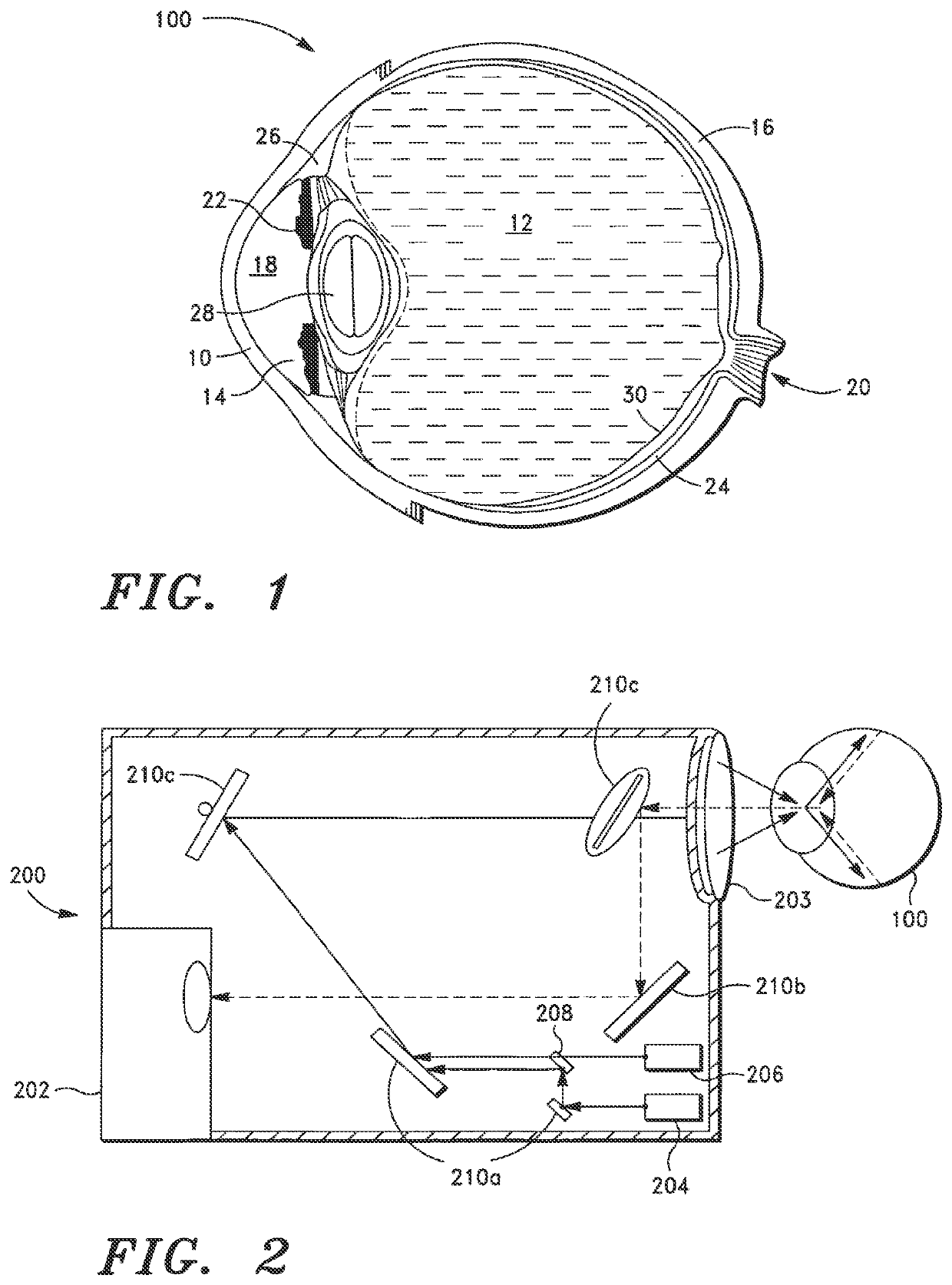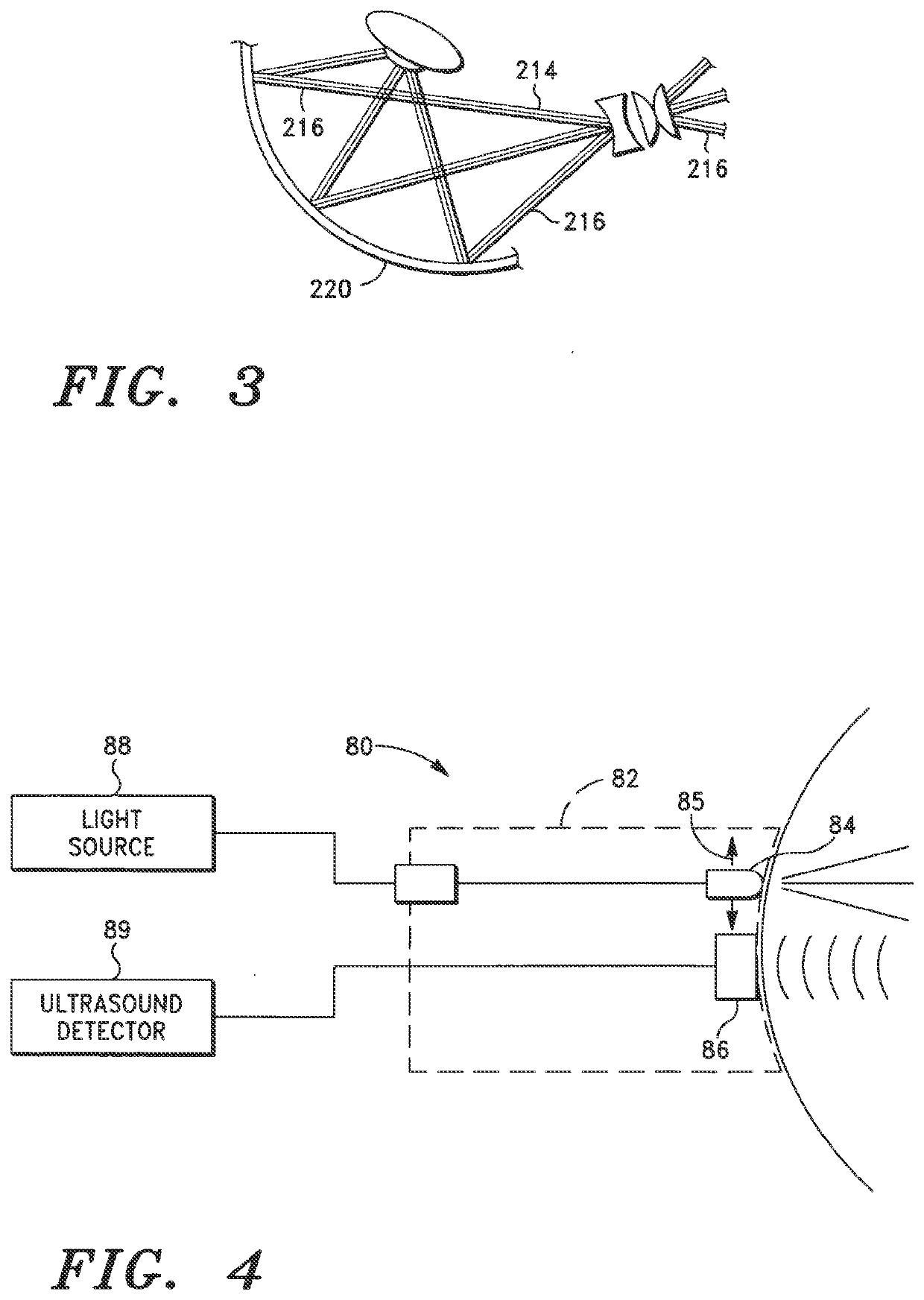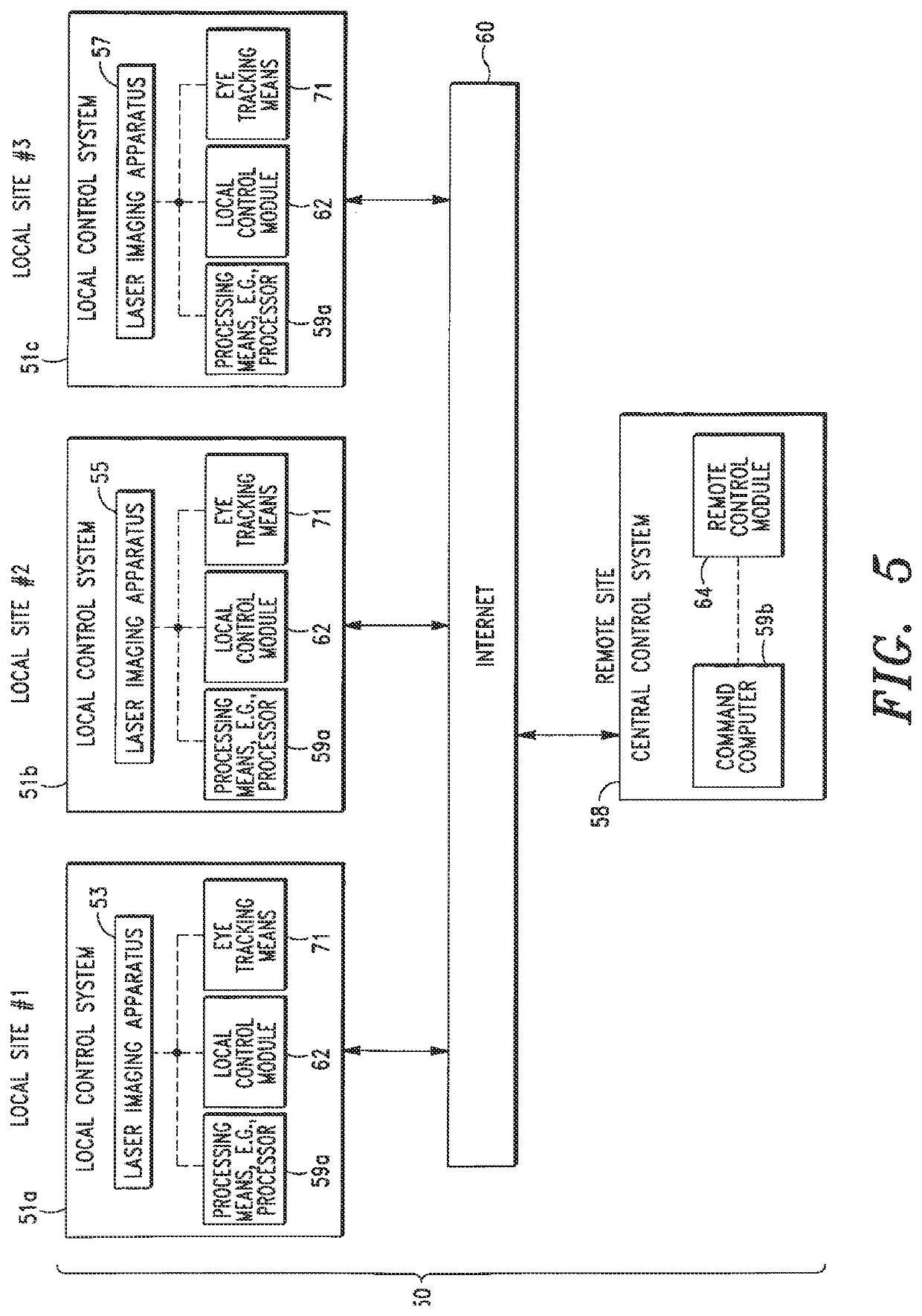Telemedicine System With Dynamic Imaging
a dynamic imaging and telemedicine technology, applied in the field of laser treatment, can solve the problems of severe vision loss, conventional slit lamp system requires contact lenses to neutralize the refractive power of the cornea, and use of contact lenses requires topical anesthesia and a dilated pupil for laser application
- Summary
- Abstract
- Description
- Claims
- Application Information
AI Technical Summary
Benefits of technology
Problems solved by technology
Method used
Image
Examples
example 1
[0488]In one embodiment (DFR) software and deep learning-based (DL-based) images are used to show loss of superficial capillary vessel density without loss of visual field over a period of time differentiating glaucoma from the early stages of diabetic retinopathy.
example 2
[0489]In another embodiment, the loss of the central visual field is observed using a combination localized hyperspectral camera and DFR combined with AI to differentiate a localized arteriolar occlusion versus glaucoma, etc.
example 3
[0490]A patient with normal intraocular pressure is studied with OCTA to measure the circumpapillary retinal nerve fiber layer (RNFL) thickness and circumpapillary capillary density where DFR, assisted with a bot and AI finds loss of circu-papillary RNFL thickness and circumpapillary capillary density indicating early stage glaucoma despite normal visual field and normal intraocular pressure. The patient is suffering from low tension glaucoma which was treated with topical allocation of anti-glaucoma medication to lower the IOP below that level that existed.
[0491]In one embodiment, an imaging system using DFR with or without bot and Metaverse and AI and / or Metaverse, AR, VR and MR with a bot creates animated speaking avatars of a physical selves permitting virtually to perform various interactions, such as assisting in surgery for proper differentiation of fine structures, advising on the location, dimensions, image the tissues to identify and quantify areas of inflammation and dise...
PUM
 Login to View More
Login to View More Abstract
Description
Claims
Application Information
 Login to View More
Login to View More - R&D
- Intellectual Property
- Life Sciences
- Materials
- Tech Scout
- Unparalleled Data Quality
- Higher Quality Content
- 60% Fewer Hallucinations
Browse by: Latest US Patents, China's latest patents, Technical Efficacy Thesaurus, Application Domain, Technology Topic, Popular Technical Reports.
© 2025 PatSnap. All rights reserved.Legal|Privacy policy|Modern Slavery Act Transparency Statement|Sitemap|About US| Contact US: help@patsnap.com



